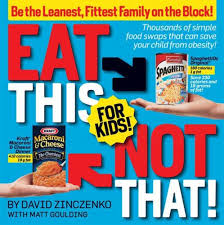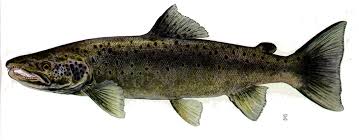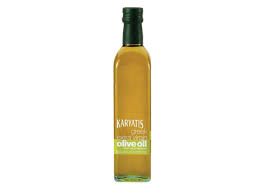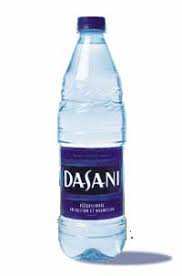In the book
The Abs Diet, David Zinczenko outlines 3 main areas to concentrate on for maximum results from your exercise time.
Big Muscle Groups is the first area. In last week's post about the no-gym workout, there is a great plan for doing compound exercises in a circuit to work the large muscles in your body. The second area to concentrate on is
Speed Intervals, the third is
Abdominal Exercises. In today's part I of supplementing your workout, we're going to go over speed intervals. Tomorrow we'll talk about abdominal exercises. With these 3 areas combined, you'll have a great all around workout routine for the week. Combined with a good diet, you're on your way to more muscle and less fat.
Here's the big picture:
Big Muscle Groups: 3 times per week
Speed Intervals: 1 time per week
Abdominal Exercises: 2 times per week
You can, of course, do more if you have the time. So here's what Speed Intervals are all about:
Speed Intervals
A while back I was trying to include some cardio exercise into my strength training. My wife and I would go to a track 3 times a week and run, I would usually do 3 or 4 miles. My endurance was good, but I was having a really hard time getting results from my strength training. Turns out that by doing an exercise like running over a long period, your body switches from burning fat to burning muscle for energy. Whoops. Just the opposite of what I wanted.

What's your goal? Steady-state exercise will eat up muscle. That's just your body being efficient. If it doesn't need the weight, it'll use it for something else (i.e. burn it and get rid of it). I prefer to build like the sprinter--powerful, defined, fast muscles. Remember: as you build muscle, your body works on it throughout the day, burning calories hours after you worked out. I learned that I should incorporate speed intervals into my routine to accomplish optimal results. If this is your goal, steady-state exercise is obsolete.
Speed intervals refer to doing cardio exercises with bursts of high intensity, instead of getting on a treadmill or stationary bike and going for a set period of time at the the same pace. "Time and time again, research has shown that higher-intensity workouts promote weight loss better than steady-state activities like running 3 or 4 miles at the same pace...researchers measured differences in fat loss between two groups of exercisers following two different workout programs. The first group rode stationary bikes four or five times a week and burned 300 to 400 calories per 30- to 45-minute session.
The second group did the same, but only one or two times a week, and they filled the rest of their sessions with short intervals of high-intensity cycling. They hopped on their stationary bikes and pedaled as quickly as they could for 30 to 90 seconds, rested, and then repeated the process several times per exercise session. As a result, they burned 225 to 250 calories while cycling, but they had burned more fat at the end of the study than the workers in the first group. In fact, even though they exercised less, their fat loss was nine times greater. Researchers said that the majority of the fat burning took place after the workout. And that's really what makes it so effective -- you'll keep your fat-burning mechanisms revved not only during your exercise but after it as well." -DZ
Do a speed interval workout once a week in addition to your strength workout. Pick your favorite cardio exercise (running, cycling, swimming, elliptical, etc.) and alternate between high intensity (pretty much all-out) and low intensity (like a jog). You only need to do about 20 or 25 minutes. I've found that sports like basketball and tennis accomplish the same goals if you're going hard enough.
Here are a few options on how to use interval training:
Interval Variation I: Standard
The following is a typical interval workout. You alternate the same period of low intensity with the same period of higher intensity.
1. 3 - 5 minutes warmup (light jog, low intensity, gradually increasing at the end of the warmup period)
2. 1 minute moderate or high intensity followed by 1 minute low intensity (repeat 6 - 8 times)
3. 3 - 5 minutes cooldown (light jog, low intensity, gradually decreasing by the end of the cooldown period)
Interval Variation II: Pyramid
This pyramid structure allows you to start with short bursts of speed, and then you'll peak at the longest surge of energy in the middle of your workout before coming back down.
1. 3 - 5 minutes warmup
2. 30 seconds high intensity, 1 minute low intensity
3. 45 seconds high intensity, 1 minute low intensity
4. 60 seconds high intensity, 1 minute low intensity
5. 90 seconds high intensity, 1 minute low intensity
6. 60 seconds high intensity, 1 minute low intensity
7. 45 seconds high intensity, 1 minute low intensity
8. 30 seconds high intensity
9. 3 - 5 minutes cooldown

 I'm always looking for ways to keep my workout varied. This one comes to us compliments of the guys at Men's Health. It's a total body workout that should only take 15 minutes or less, and you can do it when you want to change it up your routine a bit, or add it to the mix once a week or so. These 4 exercises will work every muscle group in a short time. Do them back to back with no rest in between, using the same dumbell (as much weight as you can do and still do the whole workout). Do 3 to 4 sets, resting 2 minutes between sets.
I'm always looking for ways to keep my workout varied. This one comes to us compliments of the guys at Men's Health. It's a total body workout that should only take 15 minutes or less, and you can do it when you want to change it up your routine a bit, or add it to the mix once a week or so. These 4 exercises will work every muscle group in a short time. Do them back to back with no rest in between, using the same dumbell (as much weight as you can do and still do the whole workout). Do 3 to 4 sets, resting 2 minutes between sets.











































